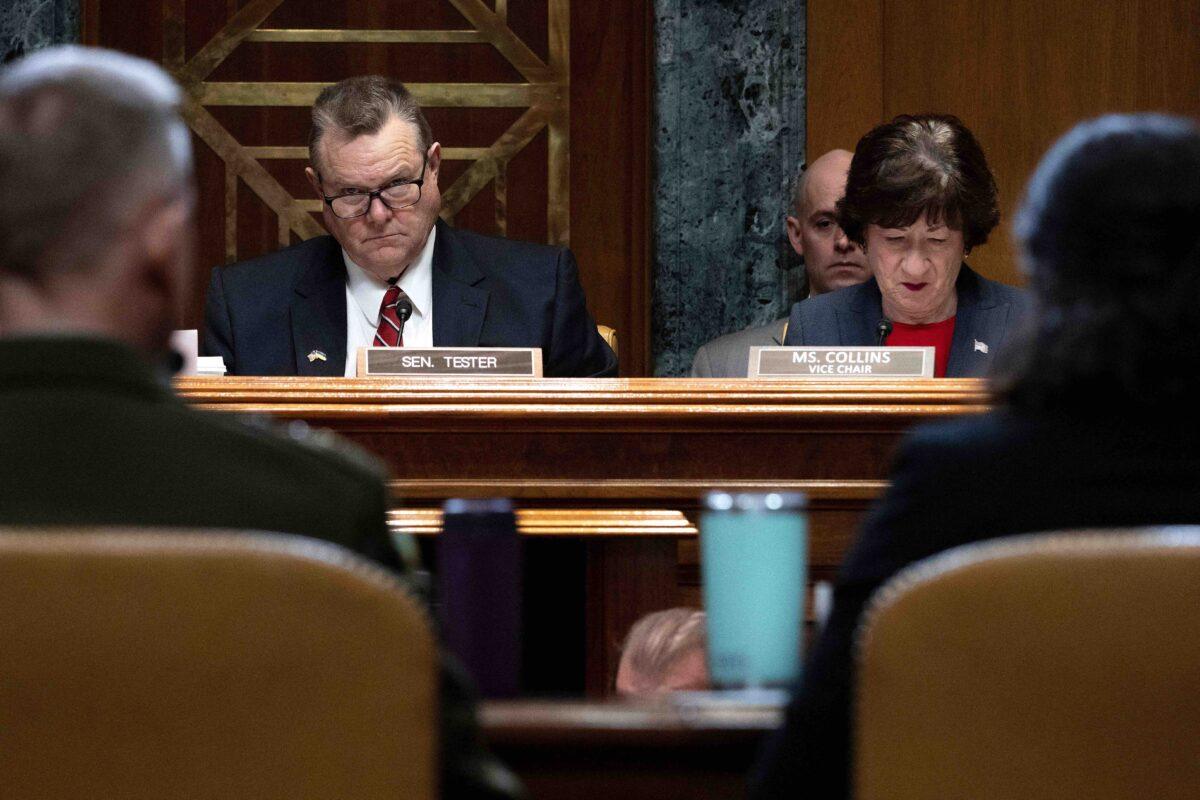The Senate Appropriations Committee’s bill calls for $852.2 billion in defense-related spending in fiscal year 2025.
Senate appropriators advanced their proposal for the 2025 national defense budget this week, with $21 billion more on the table than under the House version of the defense budget bill.
“This bipartisan bill builds on our efforts in the National Security Supplemental to strengthen our defenses in key regions, deter conflict, promote stability, and ultimately, keep our nation safe—with new investments to ensure our military remains the best in the world while supporting our servicemembers and standing with our allies,” Appropriations Committee Chairwoman Patty Murray (D-Wash.) said following the hearing.
Sen. John Tester (D-Mont.), who chairs the Appropriations Committee’s Defense Subcommittee, said the bill will help the United States keep pace with China militarily and extend additional benefits to military families.

The committee said its bill also provides $1 billion more for procuring critical missiles and torpedos than Biden requested, and provides another $1.2 billion more than the president requested to modernize and expand U.S. government ammunition production facilities. The bill provides another $1.5 billion more than Biden requested for the defense industrial base.
The Senate bill adds $2 billion more for general facility, sustainment, and modernization than Biden requested and $1.3 billion more than the president requested for critical facility upgrades.
The Senate bill would give the U.S. Air Force an additional $200 million more than Biden requested to purchase six additional F-15EX fighter jets. The bill would give the U.S. Navy an additional $252 million above what Biden requested for its nuclear-armed submarine-launched cruise missile program, and $500 million more than Biden requested for the Navy’s next-generation fighter program.
In all, the Senate bill comes in at $27.7 billion, or 3.3 percent more than the 2024 defense appropriations bill. The House version of this year’s defense budget bill, by comparison, comes in at $8.6 billion more than last year, a 1 percent increase.
The Senate bill could tee up a budget fight between the House. Congress agreed to adopt spending caps to limit budget growth as part of a deal to raise the U.S. debt limit under the 2023 Fiscal Responsibility Act. While the House version of the bill sticks to these budget caps, the Senate Appropriations Committee moved to exceed the budget caps under emergency justifications.
At a May 8 hearing, Tester acknowledged the Biden administration’s defense budget request only called for a 1 percent increase, in line with the Fiscal Responsibility Act. Still, he and Sen. Susan Collins (R-Maine) pressed for a bigger budget increase.
“The ranking member Collins and myself think we need a bigger number,” Tester said at the time.

The Montana Democrat said the various military services and combatant commands had identified more than $20 billion in unfunded defense requirements. Collins, in turn, argued the president’s budget proposal wouldn’t keep pace with inflation.
“The 1 percent increase in funding provided for FY25 under the caps is as inadequate for non-defense spending as it is for the Department of Defense,” Murray said during that same May hearing.
The House Freedom Caucus has yet to comment publicly on the Senate’s defense budget bill. The Epoch Times reached out to Rep. Bob Good (R-Va.), who chairs the House Freedom Caucus, for comment but did not receive a response by press time.
Original News Source Link – Epoch Times
Running For Office? Conservative Campaign Consulting – Election Day Strategies!


